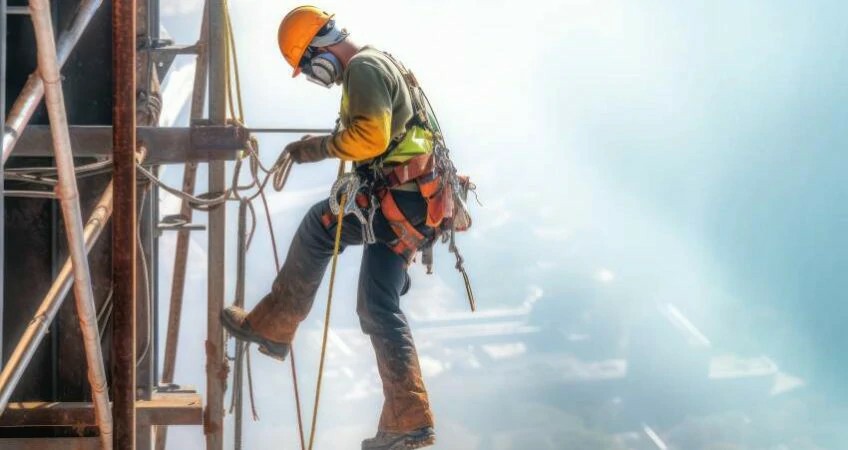Essential Safety Gear for Working at Heights: A Comprehensive Guide to Protecting Lives
Working at heights presents unique challenges and risks, making safety gear absolutely crucial. Properly selected and maintained equipment can mean the difference between life and death in high-risk environments. In this comprehensive guide, we will explore the essential safety gear necessary for Working at Heights, emphasizing their usage, maintenance, and compliance with industry regulations.
Why Safety Gear Matters
Statistics indicate that falls from heights are among the leading causes of workplace fatalities, particularly in construction and maintenance industries. Ensuring that every worker has access to and uses appropriate safety gear is not just a regulatory requirement but a moral obligation. Proper utilization of safety equipment not only protects workers but also fosters a culture of safety within the organization.
Essential Safety Gear for Working at Heights
Here’s an overview of the critical pieces of equipment every worker should utilize:
- Safety Harnesses
- Safety harnesses are essential for fall arrest systems, distributing the impact force during a fall across the body.
- **Proper Usage:** Ensure a snug fit, with all straps adjusted correctly to prevent slippage during a fall.
- **Maintenance Tips:** Regularly inspect for fraying, wear, or damage. Follow manufacturer guidelines for cleaning and storage.
- Lanyards
- Lanyards connect the harness to anchor points, providing a safety tether as workers move.
- **Proper Usage:** Determine the correct length to prevent free falls. Use shock-absorbing lanyards for added safety.
- **Maintenance Tips:** Check for tears and ensure all clips are functional before each use.
- Anchor Points
- Anchor points secure your safety gear and are vital for fall protection systems.
- **Proper Usage:** Ensure anchor points are secure and rated for the load they need to bear.
- **Maintenance Tips:** Regularly inspect anchor points for corrosion and structural integrity.
- Helmets
- Protective helmets safeguard against head injuries from falls or falling debris.
- **Proper Usage:** Make sure the helmet fits well and is worn at all times while working at heights.
- **Maintenance Tips:** Inspect the helmet for cracks and replace any helmet that shows signs of damage.
- Gloves
- Gloves enhance grip and protect hands while working with tools and equipment at heights.
- **Proper Usage:** Select gloves appropriate for the materials handled and wear them consistently.
- **Maintenance Tips:** Replace gloves that are worn, torn, or damaged to maintain hand protection.
- Fall Arrest Systems
- Fall arrest systems provide an additional layer of safety, designed to stop falls before serious injury occurs.
- **Proper Usage:** Ensure all components are integrated and well-maintained for optimal performance.
- **Maintenance Tips:** Conduct regular system evaluations and ensure compliance with local safety regulations.
Compliance with Safety Regulations
Industry regulations dictate the use of specific safety gear when working at heights. Organizations must adhere to these guidelines to safeguard their workers. In Ireland, the Health and Safety Authority (HSA) outlines comprehensive regulations regarding Working at Heights and emphasizes the importance of proper protective equipment.
Best Practices for Gear Maintenance
Maintaining safety gear is just as essential as using it. Here are some best practices:
- Conduct pre-use inspections to ensure all equipment is in working order.
- Keep detailed maintenance logs for each piece of gear.
- Store equipment in a clean, dry area to prevent deterioration.
- Follow manufacturers' guidelines for cleaning and storage, particularly for harnesses and lanyards.
Enroll in Working at Heights Training
To ensure proper usage of safety gear, workers should undergo comprehensive training. A certified Working at Heights Course provides essential information on using equipment correctly, identifying hazards, and understanding safety regulations. You can choose between practical training or the Working at Heights Course Online for flexibility.
Conclusion
Ensuring worker safety while Working at Heights starts with the right gear and training. Employers should prioritize the health and safety of their employees by providing certified equipment and facilitating Working at Heights Certification for their teams. For any questions or to schedule training, contact us at [email protected].



 349,500 Offered Certificates
349,500 Offered Certificates
 24/7 Online Training
24/7 Online Training
 Money Back Guarantee
Money Back Guarantee
 Fully Accredited Courses
Fully Accredited Courses
